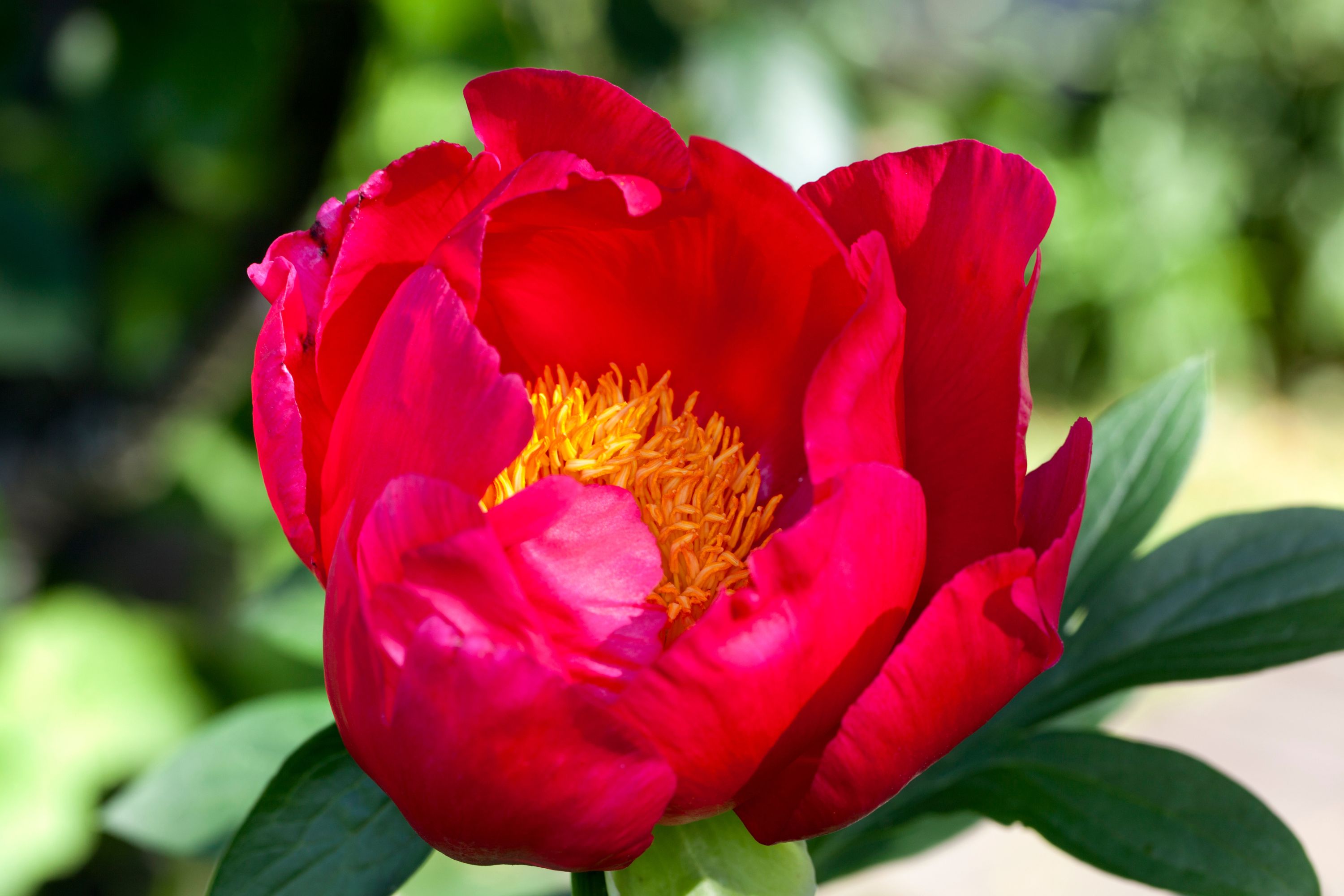Chinese peony
(Paeonia lactiflora)

Description
Paeonia lactiflora, commonly known as the Chinese peony or the common garden peony, is a perennial flowering plant that belongs to the family Paeoniaceae. This herbaceous plant is native to China and has been cultivated for its showy, fragrant flowers for centuries. Paeonia lactiflora is one of the most popular and widely grown peonies worldwide, and it has a long history of use in traditional Chinese medicine as well. In this article, we will delve into the various aspects of Paeonia lactiflora, including its description, cultivation, propagation, and uses. Description Paeonia lactiflora is a herbaceous perennial plant that typically grows to a height of 60-90 cm (24-36 in) and spreads up to 60 cm (24 in) in width. Its foliage is deeply lobed and glossy, with a deep green color, and it is deciduous in nature. The plant blooms in late spring to early summer, and its flowers are large, showy, and fragrant. The flowers are typically 10-15 cm (4-6 in) in diameter and come in a range of colors, including white, pink, red, and burgundy. The flowers have a central cluster of yellow stamens surrounded by five to ten petals, which may be single or double, depending on the variety. Cultivation Paeonia lactiflora is a hardy plant that is relatively easy to grow, and it can thrive in a wide range of soil types, including clay, loam, and sandy soils. The plant prefers a well-draining soil that is rich in organic matter and a pH range of 6.0 to 7.0. Paeonia lactiflora thrives in full sun to partial shade conditions, and it can tolerate hot and humid summers as well as cold winters. When planting, it is important to ensure that the roots of the plant are not damaged, and they should be placed no more than 5 cm (2 in) deep in the soil. Propagation Paeonia lactiflora can be propagated through various methods, including seed propagation, division, and tissue culture. Seed propagation is a slow and unreliable method, as the plants grown from seed may take several years to mature and may not produce the same quality of flowers as the parent plant. Division is the most common method of propagation, and it involves dividing the root clump of an established plant into smaller sections and replanting them in separate locations. This method is typically done in the fall or early spring when the plant is dormant. Tissue culture is a more advanced method of propagation that involves growing plant tissue in a laboratory setting. Uses Paeonia lactiflora is primarily grown for its ornamental value, and its showy, fragrant flowers are used for cut flowers, landscaping, and as a focal point in garden design. The plant is also used in traditional Chinese medicine, where it is known as Bai Shao. The roots of the plant are harvested in the fall and dried for use in various medicinal preparations. Paeonia lactiflora has been used in traditional Chinese medicine to treat a range of conditions, including menstrual disorders, liver disease, and inflammation. Conclusion Paeonia lactiflora is a beautiful and versatile plant that is well-suited for both ornamental and medicinal purposes. Its showy, fragrant flowers make it a popular choice for cut flowers and garden design, and its use in traditional Chinese medicine highlights its potential therapeutic benefits. Whether you are a gardener or a practitioner of traditional medicine, Paeonia lactiflora is a plant worth exploring.
Taxonomic tree:







